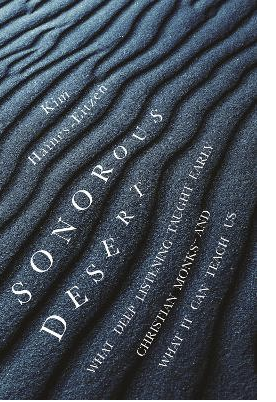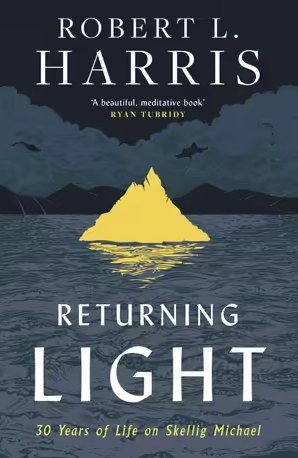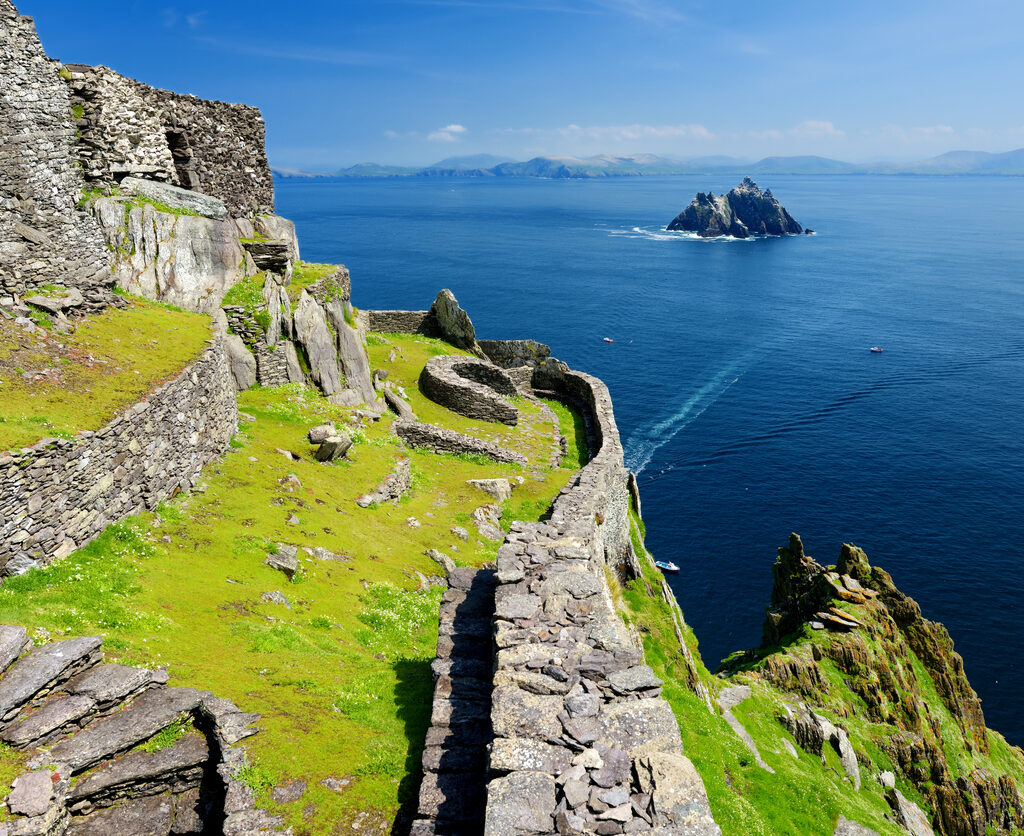Reviews: Returning Light by Robert Harris & Sonorous Desert by Kim Haines-Eitzen
The monks travelled out, by boat or on foot, to the unknown, to the wild places. They were seeking solitude, freedom to hear God’s voice away from the clamour of society; they were heading to ‘brutal’ places, willingly drawn to what Saint Anthony called ‘terrible’ places, to discipline the mind and soul into focusing on prayer and contemplation. What did they find? In the stillness of the desert, or on rocky islands surrounded by dangerous seas, they found places alive with light and sound.

In her book Sonorous Desert Kim Haines-Eitzen writes about the deserts of the Middle East and Egypt, and about the deserts of the USA, about the desert fathers and the impulse to retreat, and about the rich soundscape of the desert. She makes recordings in the desert, of wind, storms and floods, birds and goats (links to the recordings are included in the book). Robert Harris has been a caretaker for 30 years of an island of the coast of Ireland, Skellig Michael, where a monastery was established then abandoned centuries ago. He travels out for weeks at a time, and records in Returning Light poetic impressions of the rocks and seas, of the birdlife and, especially, the ever-shifting play of light.
The remote island and the desert are similar. Saint Columba described setting off to sea in order to find the desert, either literally or metaphorically. The monks on Skellig Michael, who built a monastery near the island’s topmost point and out of stacked stones, creating beehive-shaped cells, cut small troughs into the rock to collect rainwater, just like the monks in the desert. It takes some getting used to, like getting used to being aboard a ship. You are reoriented. You are exposed to the elements, existence is reduced to the essentials, you are closer to the edge of survival.
In the rawness and the starkness, in the seemingly more monotonous land and seascapes, the senses are awakened. Sights and sounds are stronger. Haines-Eitzen describes Death Valley’s silence as overwhelming, a presence rather than just absence. But while the monks sought silence, they found other sounds. The current abbot of Wadi Qilt remarks that only the demons and snakes are silent. This, says Haines-Eitzen, is not quite what Saint Anthony thought. He felt beset by the noise of the desert; it took all his spiritual strength to shut out the din of the demons. Other sounds were positive, though. Haines-Eitzen thinks monasteries were situated for their acoustic properties, built into the sonic sweet spots of the canyon walls.
Monk Thomas Merton wrote about the links between exterior and interior states. The restrictions of the rugged landscapes funnel and channel perceptions. For the monks, the miraculous was thrown into relief. The danger of their external environment intensified the spiritual battles. Monks often saw themselves as warriors, with prayer and contemplation as their weapons, fighting for souls in the rest of the world. Harris’s island is named after Saint Michael, the battle-ready angel for whose assistance the monks prayed.

Monks came to love their remote homes. They were not simply trying, as we might imagine, to separate the spiritual from the worldly, but saw the divine hand in the world around them – the human, animal, mineral and meteorological were integrated as in an Indigenous worldview, and blessed. Ironically, what started out as solitary (anchoritic monasticism) turned into the communal (cenobitic monasticism). When communities grew, and so did the visitors, monasteries were built, hospitality being as essential as contemplation.
Harris describes visitors day-tripping to the island, climbing the vertiginous steps to the small monastery. But true appreciation comes with time, as one attunes to the world in flux and ‘ancient ways of seeing’. Haines-Eitzen writes that the desert is not ‘static’, but, rather, hums to the rhythms of flood and dry. Harris describes the seasons, the swells and hurricanes, the ever-present birds cycling through their breeding seasons, the earth rolling under the probing fingers of sunlight that light up the interiors of the monastic cells at celebrated times of the year. What seems so solid is fluid. Solid rock seems to blink and flash and float, depending on the weather, fracturing and reassembling. Seabirds wheel and glint and cry.
I am sometimes wary of the monastic impulse to withdraw, especially from the joys of everyday life. But we might like to see the harsh environments described in these books as not restricting but providing a different focus for joy. Haines-Eitzen is keen to draw lessons from the desert and the monks who lived there, and while monasticism is not for everyone, she writes about the need for deeper listening. She advocates for a kind of determined passivity, like the monks, not taking by force but remaining open to the gifts to the senses offered by these wild and remote places.
Harris suggests that while not everyone continues to use the language of spiritual warfare, we still talk metaphorically of battling demons, and we emphasise the importance of the transcendent. He notes the attraction of his island for head-clearing and getting in touch with more elemental aspects of life.
Nick Mattiske blogs on books at coburgreviewofbooks.wordpress.com and is the illustrator of Thoughts That Feel So Big.













